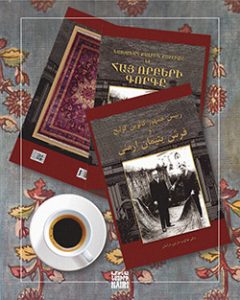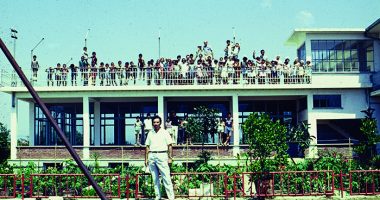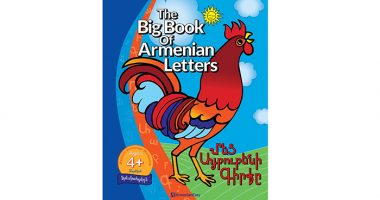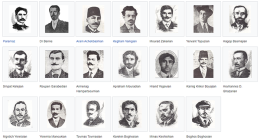In 2013 the Armenian Cultural Foundation published President Calvin Coolidge and the Armenian Orphan Rug by Dr. H. Martin Deranian. The result of over three decades of research and investigation, Dr. Deranian’s work traces the history of the rug and the Armenian Genocide orphans: their transportation from Urfa to safety to the present day Lebanon by the great Swiss humanitarian and physician Jakob Künzler, known as the “Father of the Armenian orphans.” He details its journey to the United States, presentation to President Calvin Coolidge in the White House, several decades in the possession of the Coolidges and its return again to the White House in the mid-1980s, where it is stored to this day.
“The beautiful rug woven by the [Armenian] children in the [Ghazir] orphanage in the Lebanon has been received. This, their expression of gratitude for what we have been able to do in this country for their aid, is accepted by me as a token of their goodwill to the people of the United States. . . The rug has a place of honor in the White House, where it will be a daily symbol of good-will on earth.” These words of President Calvin Coolidge on December 4, 1925, were made in response to Dr. John H. Finley, Vice-Chairman of the Near East Relief Executive Committee, who presented the rug for the Armenian orphans who “have tied into it the gratitude of tens of thousands of children to you and to America. And what they have tied into it will never be untied. . . It is sent to adorn the dearest of our temples, the White House of our President.”


In light of the great demand and interest internationally, the Armenian Cultural Foundation has welcomed the publication of the President Calvin Coolidge and the Armenian Orphan Rug in other languages. A German edition of the book, Präsident Calvin Coolidge und der Armenische Waisenteppich, translated by Ortrun Cramer, was published by Hans Schiler publishing house in 2014. This year the Nairi Publishing house in Tehran published two Armenian and Farsi editions of the book under the auspices of the Armenian Architects and Engineers Association of Iran. The Armenian edition Nakhagah Kalvin Kolije yev hay vorperi gorge is translated by Armenouhi Badalian and the Farsi edition, Reyis jomhur kalvin koulij va farshe yatimane armani by Karine Harutounian-Dror. Both titles, available through Nairi Publishing house, are exact reproductions of the English edition, including the original preface as well as all the illustrations, annotations and bibliography. The Armenian Cultural Foundation congratulates and commends the above efforts to make this small and yet important book on the post-Armenian Genocide episode pertaining to the Armenian orphans in the Near East to the public.










